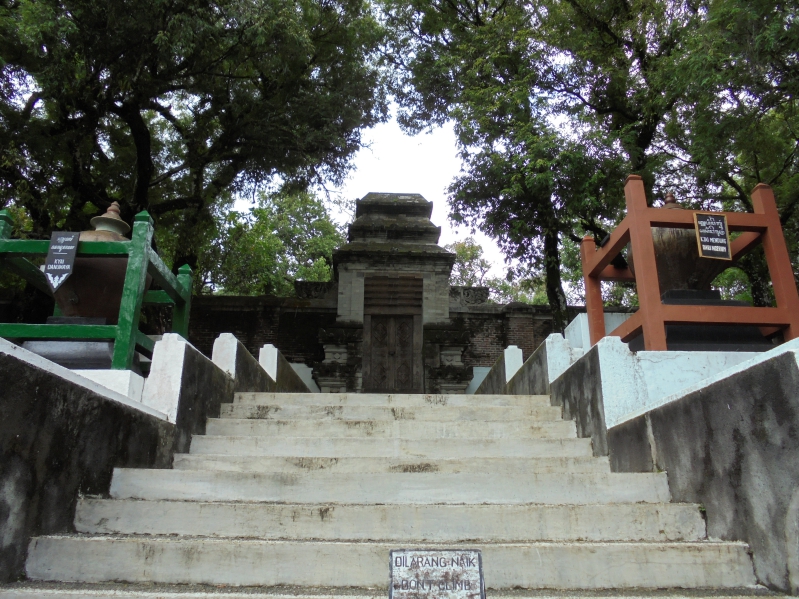News
Imogiri Royal Tombs: Where Kings Rest and Stories Linger
If you ever find yourself in Yogyakarta and feel like your usual itinerary of Gudeg, Malioboro, and Tugu is a bit too mainstream, let me recommend a detour: the Royal Tombs of Imogiri. Yep, a cemetery. But not just any cemetery—this is where the kings of Mataram Islam and their descendants chose to rest for eternity.
Built in 1632 by Sultan Agung Hanyokrokusumo, the third ruler of the Mataram Sultanate, Imogiri is more than a burial ground—it’s a history book carved in stone and guarded by 300 steep steps that will test both your stamina and spiritual curiosity. Located about 12 kilometers south of Yogyakarta, on Merak Hill, the tomb complex sprawls across 10 hectares and whispers tales of glory, faith, and a touch of Javanese mysticism.
A Hilltop Fit for Kings
Sultan Agung, who ruled from 1613 to 1645, wasn’t just any monarch. He’s remembered as the king who brought Mataram Islam to its peak, conquering lands while blending Javanese tradition with Islamic values. Like many rulers, he also had to think about his eternal “retirement plan”: a final resting place.
According to old chronicles like Babad Momana and Babad ing Sangkala, Sultan Agung initially considered Girilaya Hill. But fate intervened when Panembahan Juminah, who oversaw the construction, died and was buried in Giriloyo. Believing that the site was no longer suitable for his dynasty, Sultan Agung sought another sacred hill.
The choice fell on Merak Hill, inspired by an ancient belief that ancestors dwell in high places. There’s also a fascinating side story: Sultan Agung once dreamed of being buried in Mecca, on fragrant soil. But a wise cleric advised against it—how could his people visit him there? Instead, he brought a handful of that sacred soil back to Java. Some of it landed in Giriloyo, but the rest he scattered on Merak Hill. And that’s where the Imogiri complex rose.
The First Grave, the Main Grave
When Sultan Agung passed away in 1645, he became the first to be buried at Imogiri. His tomb, known as Kasultanagungan, became the nucleus of the complex. Over time, Imogiri grew into a sacred space divided into sections—kedaton—reserved for later kings and their families.
After the Giyanti Treaty split Mataram into the Yogyakarta Sultanate and the Surakarta Sunanate, Imogiri adapted. The western side became the burial place for Surakarta rulers, while the eastern side belonged to Yogyakarta’s kings. Politics divided the living, but in death, they still share the same hill.
What’s in a Name?
The name Pajimatan Imogiri has layers of meaning. Pajimatan comes from jimat, meaning a talisman or heirloom—so it’s essentially “the place of sacred relics.” Meanwhile, Imogiri (or Imagiri) combines ima/hima (clouds) and giri (mountain), roughly translating to “cloud-covered mountain.” Put together, it’s poetic: a lofty mountain where heirlooms—and royal souls—reside.
The Royal Guest List
The complex is divided into eight kedaton (palace-like sections). Each one houses kings from different eras:
-
Kedaton Sultan Agungan – Sultan Agung, Sunan Amangkurat II, Sunan Amangkurat III
-
Kedaton Pakubuwanan – Sunan Pakubuwana I, Amangkurat IV, Pakubuwana II
-
Kedaton Bagusan/Kasuwargan – Pakubuwana III, IV, V
-
Kedaton Astana Luhur – Pakubuwana VI, VII, VIII, IX
-
Kedaton Girimulyo – Pakubuwana X, XI
-
Kedaton Kasuwargan Yogyakarta – Sultan Hamengkubuwana I & III
-
Kedaton Besiyaran – Sultan Hamengkubuwana IV, V, VI
-
Kedaton Saptarengga – Sultan Hamengkubuwana VII, VIII, IX
Quite the lineup, right? It’s basically the royal version of a family tree—but carved into stone and guarded by stairways.
Still Alive with Visitors
Despite being centuries old, Imogiri is far from forgotten. Pilgrims, history buffs, and curious travelers still climb those 300 stairs to pay their respects, especially on certain sacred days. Some come seeking blessings, some come for heritage, others simply want to feel the atmosphere where power, spirituality, and tradition converge.
Visiting Imogiri isn’t just about “seeing a tomb.” It’s about walking into a story: the ambition of a king, the politics of a dynasty, the symbolism of a mountain, and the way Javanese culture has always found beauty in life and death alike.



